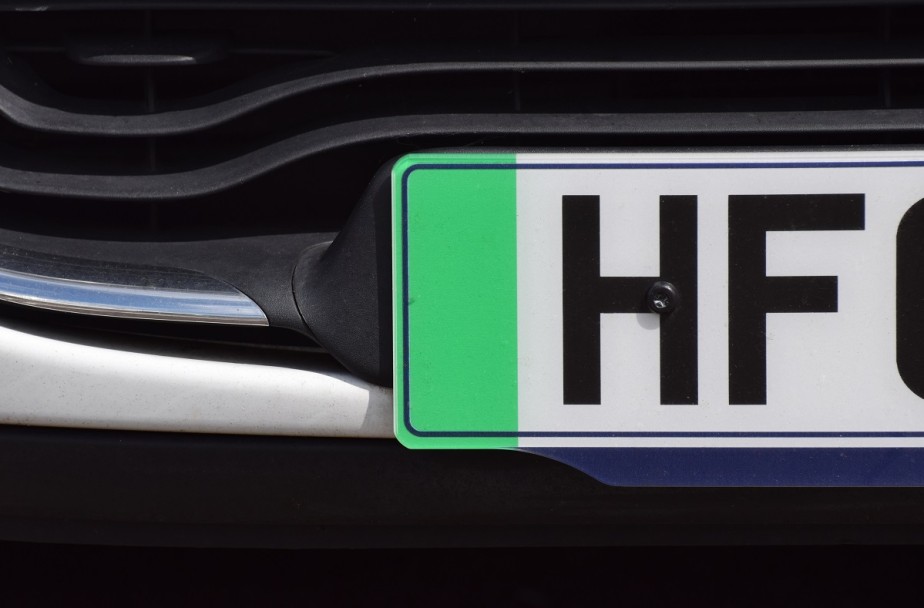Are you thinking about getting a new number plate? Or fancy your own personalised UK private number plate? It’s important to be aware of the various number plate laws to ensure your new plates are road legal. Of course, reputable plate sellers will always align with current regulations, but it never hurts to be aware of the rules about what constitutes legal and illegal number plates. So, read on and discover the different UK number plate laws.
What is the law on number plates?
There are several UK number plate laws, providing rules for everything from the material that can be used to the size and colour of the characters on the plate itself. To ensure you are using legal number plates, follow each of the below government rules.
Basic UK number plate laws
- Plates must be made from a reflective material.
- Front plates must display black characters on a white background.
- Rear plates must display black characters on a yellow background.
- Plates must not have a background pattern.
- Plates must be marked to show who supplied the number plate.
- Plates must be marked with a British Standard number - this is ‘BS AU 145e’ for plates fitted after 1st September 2021.
- The characters must not be removable or reflective.
- Plates fitted after 1st September 2021 must be a single shade of black.
Legal number plate format in the UK
A particular format is followed for legal registration numbers in the UK, with the current format being introduced on 1st September 2001:
- The first two letters of a number plate indicate where the vehicle was registered.
- The following two numbers indicate when the vehicle was identified.
- The last three letters are random.
READ ALSO: How to read UK number plates
Legal number plate design: letter space, size and style
The characters on number plates must be a certain height and size to be legal in the UK. The law on number plate characters changes depending on when your number plate was fitted. Discover below the number plate law for plates installed before and after 1st September 2001.
Number plates fitted after 1st September 2001
Number plates fitted before 1st September 2001
What features can legal number plates have?

- Plates can have 3D (raised) characters.
- Plates can display certain flags, symbols and identifiers.
- Plates can display a green flash if you have a zero-emission vehicle.
Are 3D number plates legal?
Despite the confusion about a change to UK number plate laws in September 2021, 3D number plates are legal as long as they meet the requirements of the current British standard, BSAU 145d.
Are 4D number plates legal?
4D number plates are perfectly legal, but like all types of number plates, they must conform to the requirements of the current British standard, BSAU 145d.
READ ALSO: Everything you need to know about 4D number plates
Are tinted number plates legal?
Tinted number plates are illegal in the UK. A tinted plate breaks UK number plate laws as it uses a darkened/tinted acrylic in front of the reflective background, making it difficult to read, especially at night.
Most number plate laws are built around maximising the plate’s visibility on the road. So, much like dirt on a number plate obscuring the registration, tinted number plates are also deemed to be obstructive.
Motorbike number plate laws
Like with cars, there are various laws on using motorbike number plates. Take a look at a couple of important rules about motorbike number plates below:
- If registered on or after 1st September 2001, bikes must only display a number plate at the rear of the vehicle.
- If registered before 1st September 2001, bikes can display a number plate at the front, but you do not have to.
Number plate laws when towing a trailer
When your vehicle is towing a trailer, you must display a number plate on both the vehicle and the trailer. Make sure you also follow the below rules:
- A trailer’s number plate must be the same as the vehicle it’s being towed by.
- When towing more than one trailer, the number plate must be fixed to the trailer at the back.
When did the UK number plate law begin?
It has been a legal requirement for motor vehicles to carry a number plate and be entered into an official vehicle registry since the Motor Car Act 1903, which came into force on 1 January 1904. This Act was passed so vehicles could easily be traced in the event of an accident or other incident.
Where Can You Buy Legal Number Plates?
If you need to buy a new plate, you can purchase a plate that follows all of the various UK number plate design laws from Right Reg. Just enter your registration and personal details, and your new number plate will be dispatched the next working day and posted right through your letterbox.
You can even purchase a 4D number plate if you want to try something a little bit different and make your new plate stand out from the crowd.
READ ALSO: E-Plates: Everything you need to know about new number plate technology
Is it legal to make your own number plate?
You can make your own personalised number plate, also known as a dateless number plate (a registration that doesn’t include numbers representing the year the car was manufactured). This is a popular option for those wanting something more unique. The plate still has to conform to British number plate laws, but there are fewer restrictions regarding the format.
READ ALSO: The world’s most expensive number plates
If you want to pick yourself up a personalised private plate, we at Right Reg are here to help, being expert buyers and sellers of number plates in the UK.
Alternatively, if you need assistance sourcing a new plate or have any questions, please don’t hesitate to contact us.
For more tips, guides, and advice, visit our news page.


